Singapore-based producer, Precious Metal Collectors (PMC) have impressed us over the last year with a very impressive range of copper-cored silver coins. What these are is pretty simple in theory. You take an amount of silver, in this case two ounces, and instead of just strking a design into it as you would a normal coin, the silver is ‘wrapped around a much larger (11.5 oz) copper planchet. Basically, the silver is a relatively thick skin. The end result is huge in comparison to a traditional strike, as you can see in the comparitive image lower down.
Coming in at 80 mm in diameter, these have a surface area four times larger than a 40 mm coin, and they’re considerable thicker. This enables the employment of high levels of relief as well. PMC have issued a good selection of subjects to date, and one of the more intriguing is this series called ‘The Nine Worthies’ There’s more detail on what that is below, but fundamentally it’s a group of historical figures said to embody the concept of chivalry in one form or another.
Hector of Troy was the first subject, and now we see a double release of Joshua, and King Arthur. The designs have a very distinctive artistic style and are packed with details over the whole canvas. This even extends to the obverse faces, which are unique to each issue and quite different outside of the small central area carrying the issue details. There is a change from the Hector issue, which came out for Niue Island. These two are issued for the African nation, the Republic of Chad.
THE NINE WORTHIES
The Nine Worthies are nine historical, scriptural, and legendary personages who personify the ideals of chivalry established in the Middle Ages, whose lives were deemed a valuable study for aspirants to chivalric status. All were commonly referred to as ‘Princes’, regardless of their historical titles. They were first described in the early fourteenth century, by Jacques de Longuyon in his Voeux du Paon.
The Nine Worthies include three pagans, three Jews and three Christians. As a group, the nine worthies represent all facets of the perfect chivalrous warrior. All, with the exception of Hector, are conquering heroes. Those not royal were presumed to come from knightly families. All lived in the pre-heraldic era, and attributed arms were invented for them, as in Lucas van Leyden’s engraving. All brought glory and honour to their nations and were noted for their personal prowess in arms. As individuals, each displayed some outstanding quality of chivalry which made them exemplars of knighthood. That the nine individual figures were generally not distinguished, iconographically, with respect to relative antiquity or ethnicity, would suggest that the virtues that they manifest are to be understood as timeless and universal.
PAGANS
HECTOR: In Greek mythology and Roman mythology, Hector was a Trojan prince and the greatest fighter for Troy in the Trojan War. He acted as leader of the Trojans and their allies in the defence of Troy, “killing 31,000 Greek fighters”, offers Hyginus.
ALEXANDER THE GREAT: Alexander III of Macedon (20/21 July 356 BC – 10/11 June 323 BC), was a king (basileus) of the ancient Greek kingdom of Macedon and a member of the Argead dynasty. He succeeded his father Philip II to the throne at the age of 20. He spent most of his ruling years on an unprecedented military campaign through Asia and north-east Africa, and by the age of thirty, he had created one of the largest empires of the ancient world, stretching from Greece to northwestern India. He was undefeated in battle and is widely considered one of history’s most successful military commanders.
GAIUS JULIUS CAESAR: (12 or 13 July 100 BC – 15 March 44 BC), known by his nomen and cognomen Julius Caesar, was a populist Roman dictator, politician, and military general who played a critical role in the events that led to the demise of the Roman Republic and the rise of the Roman Empire. He was also a historian and wrote Latin prose. Caesar is considered by many historians to be one of the greatest military commanders in history.
JEWS
JOSHUA: Is the central figure in the Hebrew Bible’s Book of Joshua. According to the books of Exodus, Numbers and Joshua, he was Moses’ assistant and became the leader of the Israelite tribes after the death of Moses. His name was Hoshea the son of Nun, of the tribe of Ephraim, but Moses called him Joshua (Numbers 13:16), the name by which he is commonly known. According to the Bible he was born in Egypt prior to the Exodus.
DAVID: Is described in the Hebrew Bible as the third king of the United Monarchy of Israel and Judah, after Ish-bosheth. In the biblical narrative, David is a young shepherd who gains fame first as a musician and later by killing the enemy champion Goliath. He becomes a favourite of King Saul. Worried that David is trying to take his throne, Saul turns on David. After Saul and his son Jonathan are killed in battle, David is anointed as King. David conquers Jerusalem, taking the Ark of the Covenant into the city, and establishing the kingdom founded by Saul. Before his peaceful death, he chooses his son Solomon as successor. He is honoured in the prophetic literature as an ideal king and the forefather of a future Messiah, and many psalms are ascribed to him.
JUDAS MACCABEUS: Was the third son of Mattathias the Hasmonean, a Jewish priest from the village of Modiin. In 167 BCE Mattathias, together with his sons Judah, Eleazar, Simon, John, and Jonathan, started a revolt against the Seleucid ruler Antiochus IV Epiphanes, who since 175 BCE had issued decrees that forbade Jewish religious practices. After Mattathias’s death in 166 BCE, Judah assumed leadership of the revolt in accordance with the deathbed disposition of his father. The First Book of Maccabees praises Judah’s valour and military talent, suggesting that those qualities made Judah a natural choice for the new commander.
CHRISTIANS
KING ARTHUR: also called Arthur Pendragon, was a legendary British leader who, according to medieval histories and romances, led the defence of Britain against Saxon invaders in the late 5th and early 6th centuries. The details of Arthur’s story are mainly composed of folklore and literary invention, and modern historians generally agree that he is unhistorical. The sparse historical background of Arthur is gleaned from various sources, including the Annales Cambriae, the Historia Brittonum, and the writings of Gildas. Arthur’s name also occurs in early poetic sources such as Y Gododdin.
CHARLEMAGNE: or Charles the Great (2 April 748 – 28 January 814), numbered Charles I, was king of the Franks from 768, king of the Lombards from 774, and emperor of the Romans from 800. During the Early Middle Ages, he united the majority of western and central Europe. He was the first recognised emperor to rule from western Europe since the fall of the Western Roman Empire three centuries earlier. The expanded Frankish state that Charlemagne founded is called the Carolingian Empire. He was later canonized by Antipope Paschal III.
GODFREY OF BOUILLON: (18 September 1060 – 18 July 1100) was one of the leaders of the First Crusade from 1096 until its conclusion in 1099. He was the lord of Bouillon, from which he took his byname, from 1076 and the duke of Lower Lorraine from 1087. After the successful siege of Jerusalem in 1099, Godfrey became the first ruler of the Kingdom of Jerusalem. He refused the title of king, however, as he believed that the true king of Jerusalem was Jesus Christ, preferring the title of advocate (i.e., protector or defender) of the Holy Sepulchre. He is also known as the “baron of the Holy Sepulchre” and the “crusader king”.
| SPECIFICATION | |
| DENOMINATION | 5,000 Francs CFA (Chad) |
| COMPOSITION | 0.999 silver / 0.999 Copper |
| WEIGHT | 62.2 grams (Ag) / 357.7 grams (Cu) |
| DIMENSIONS | 80.0 mm |
| FINISH | Antique |
| MODIFICATIONS | Ultra high relief |
| MINTAGE | 500 per design |
| BOX / C.O.A. | Yes / Yes (Made of 3.1g silver) |




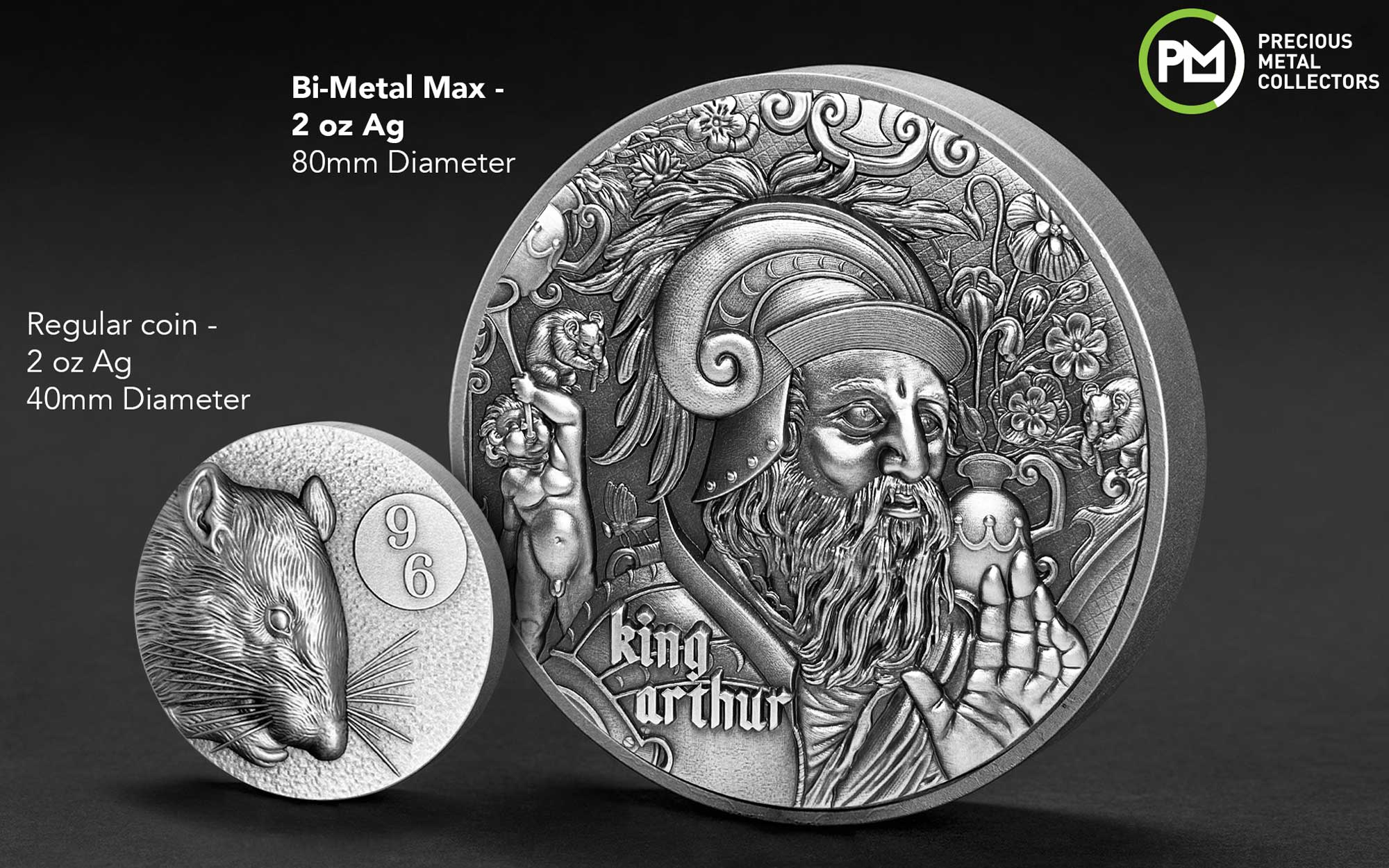
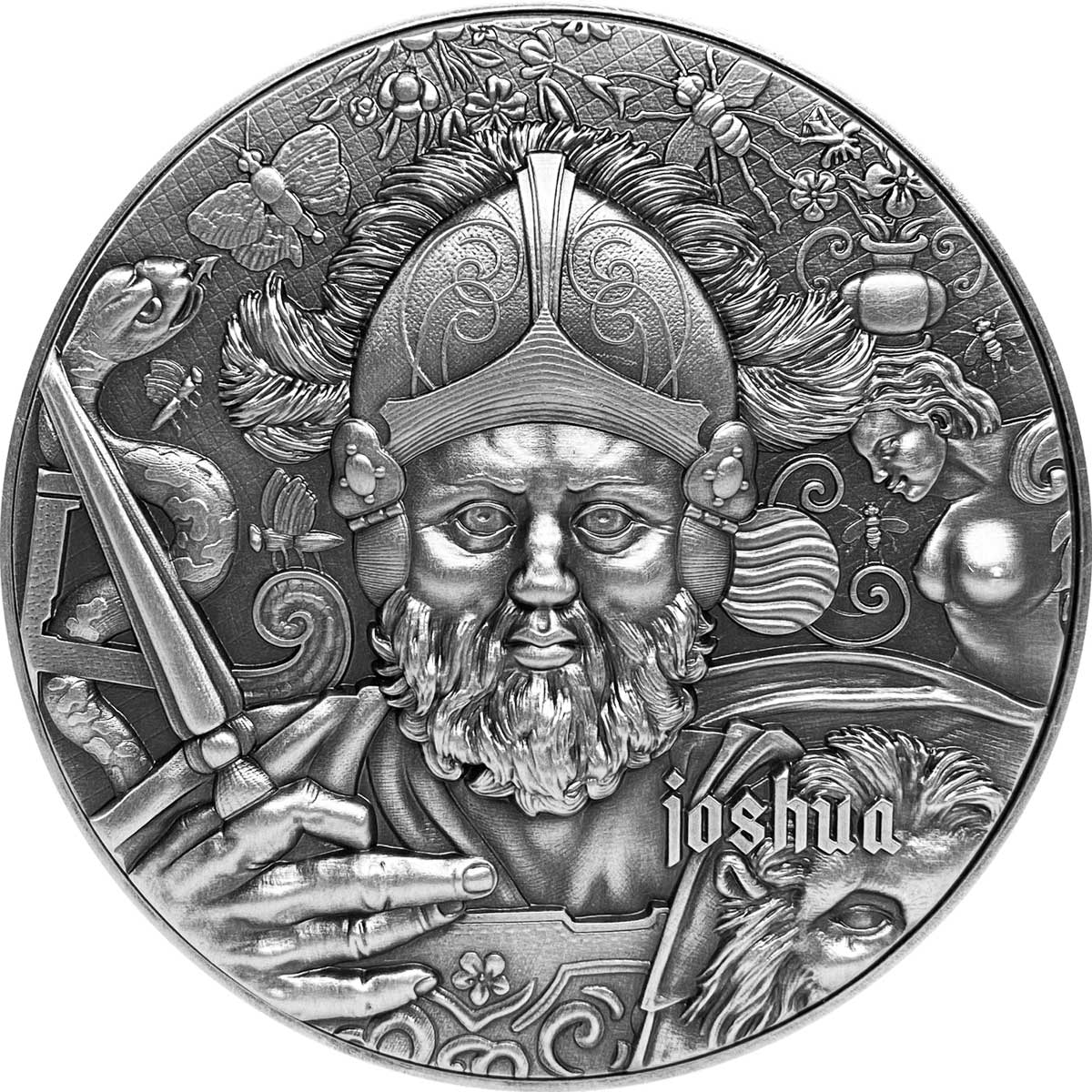
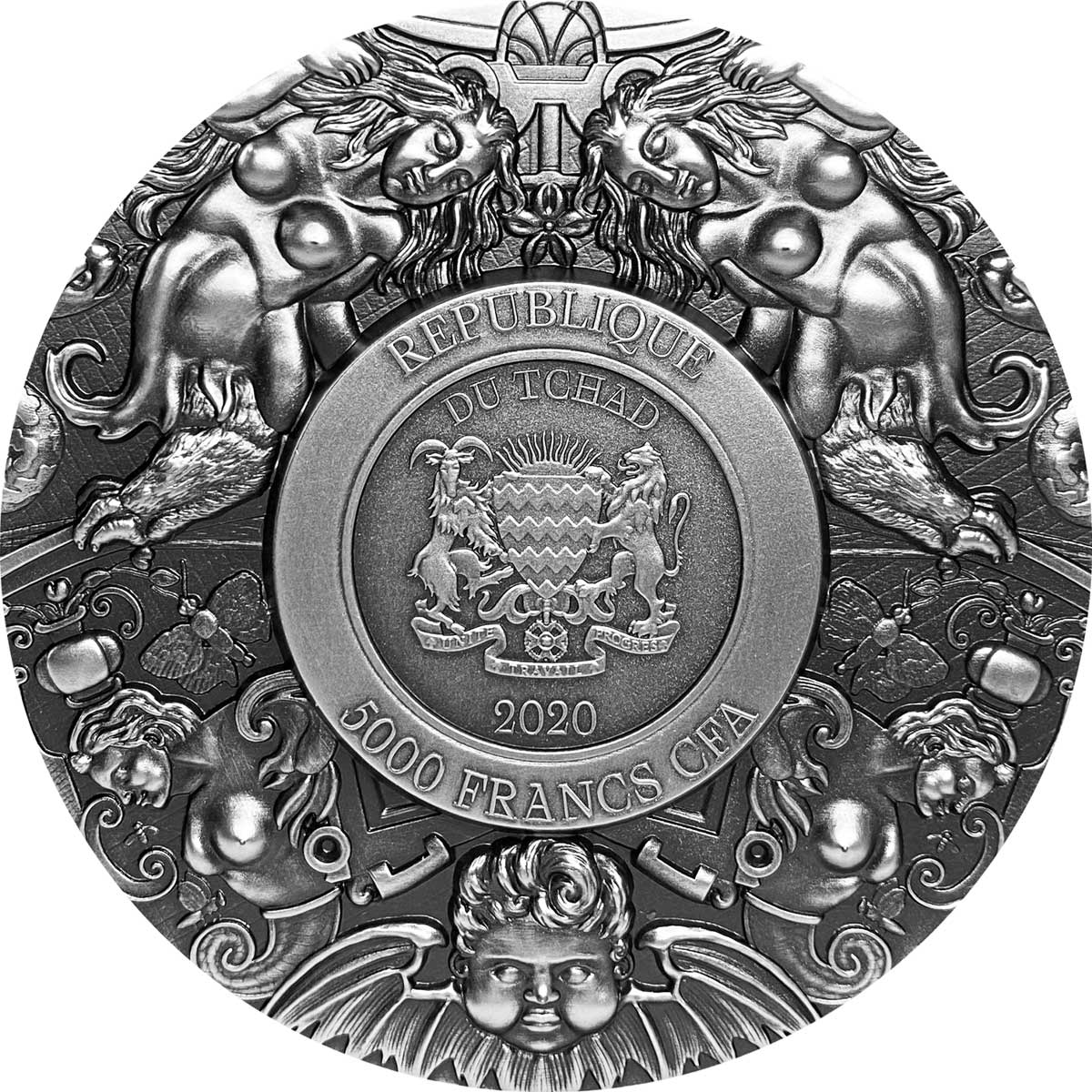
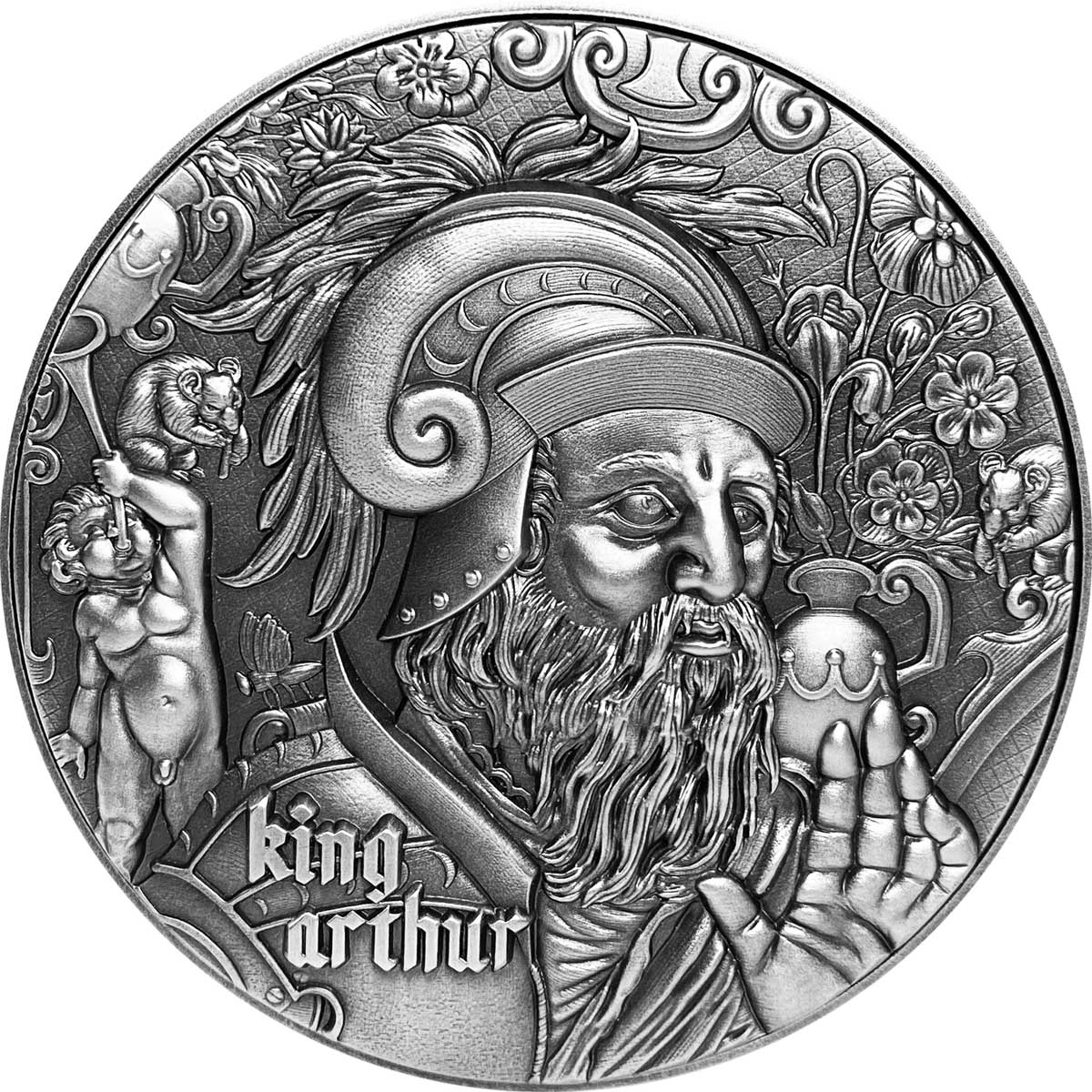

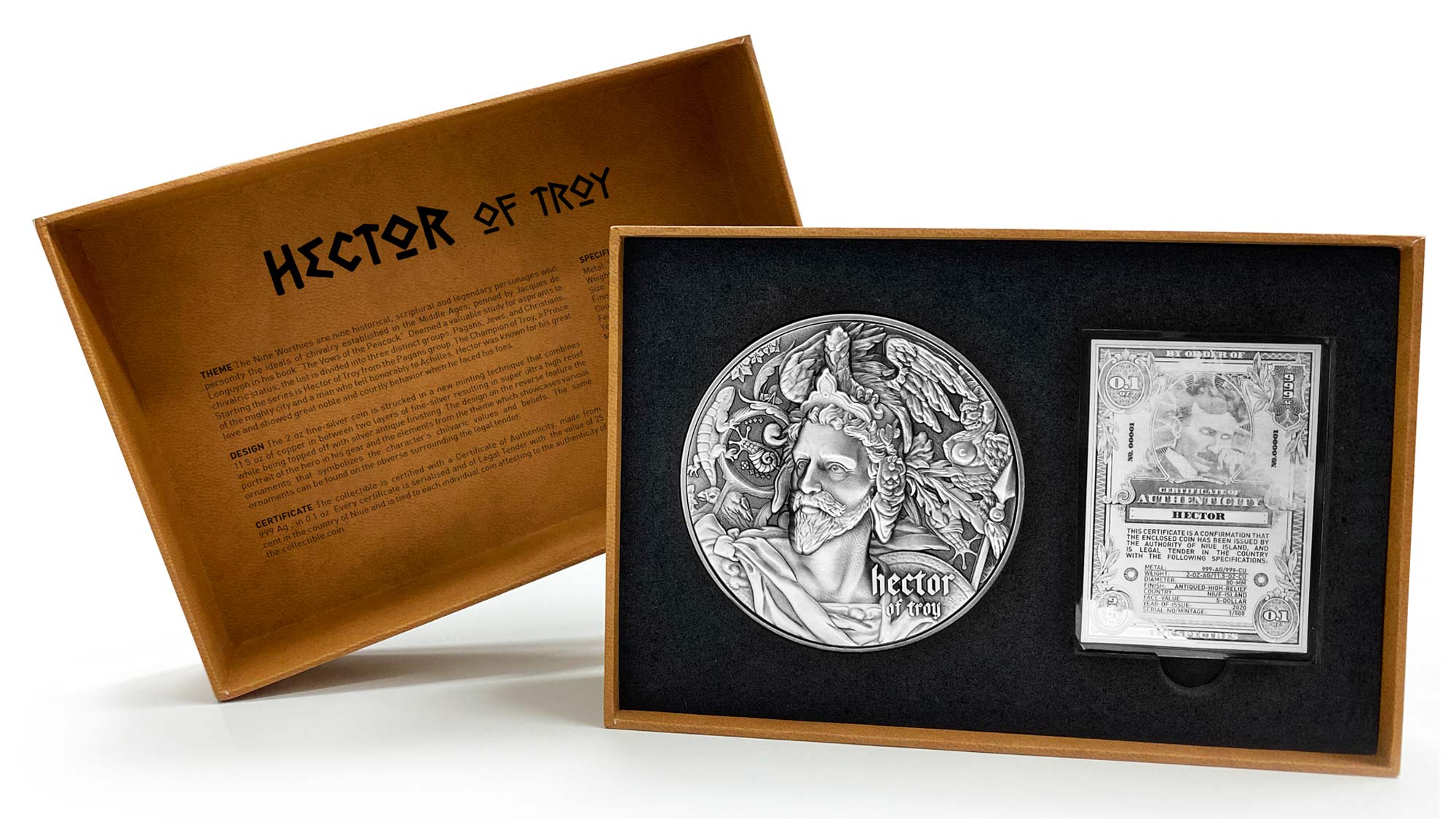
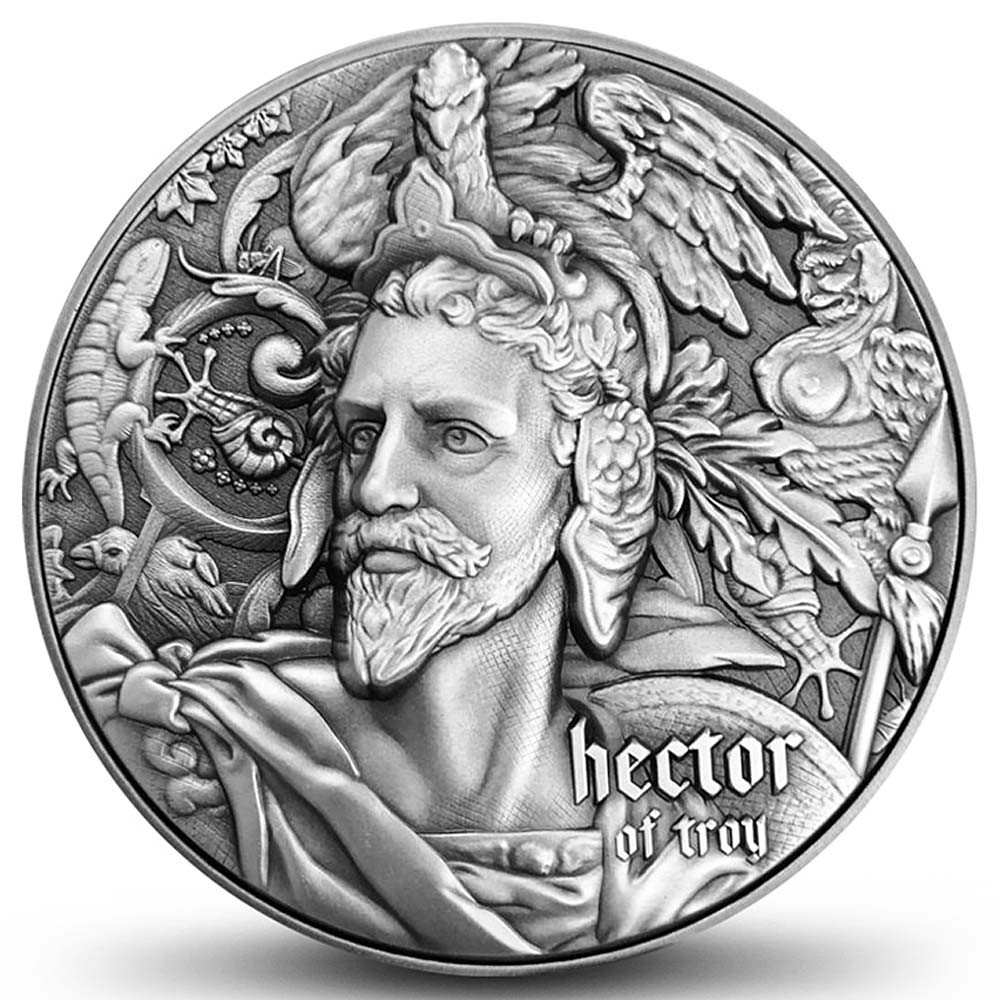
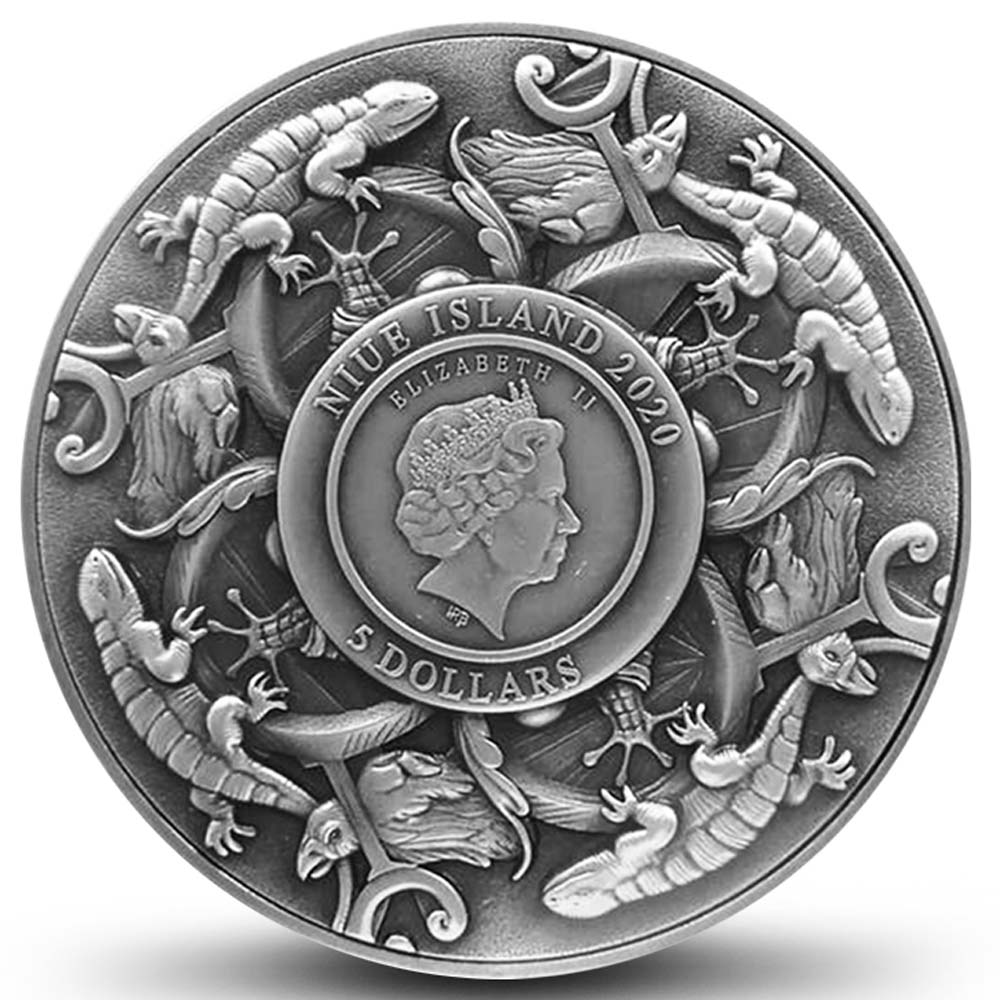
Bought the first coin, Hektor. An incredible coin with beautifull detail. Its not just the coin, it´s the whole package. The coin lies in a very nice themed box next to the CoA. Already got a pre-order on King Arthur and Joshua and i can’t wait!